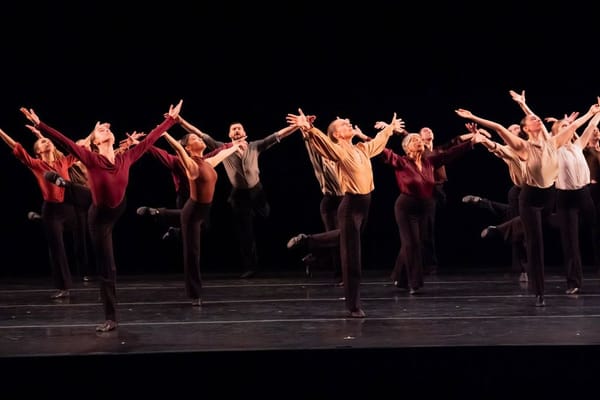The Many Meanings of Meaning
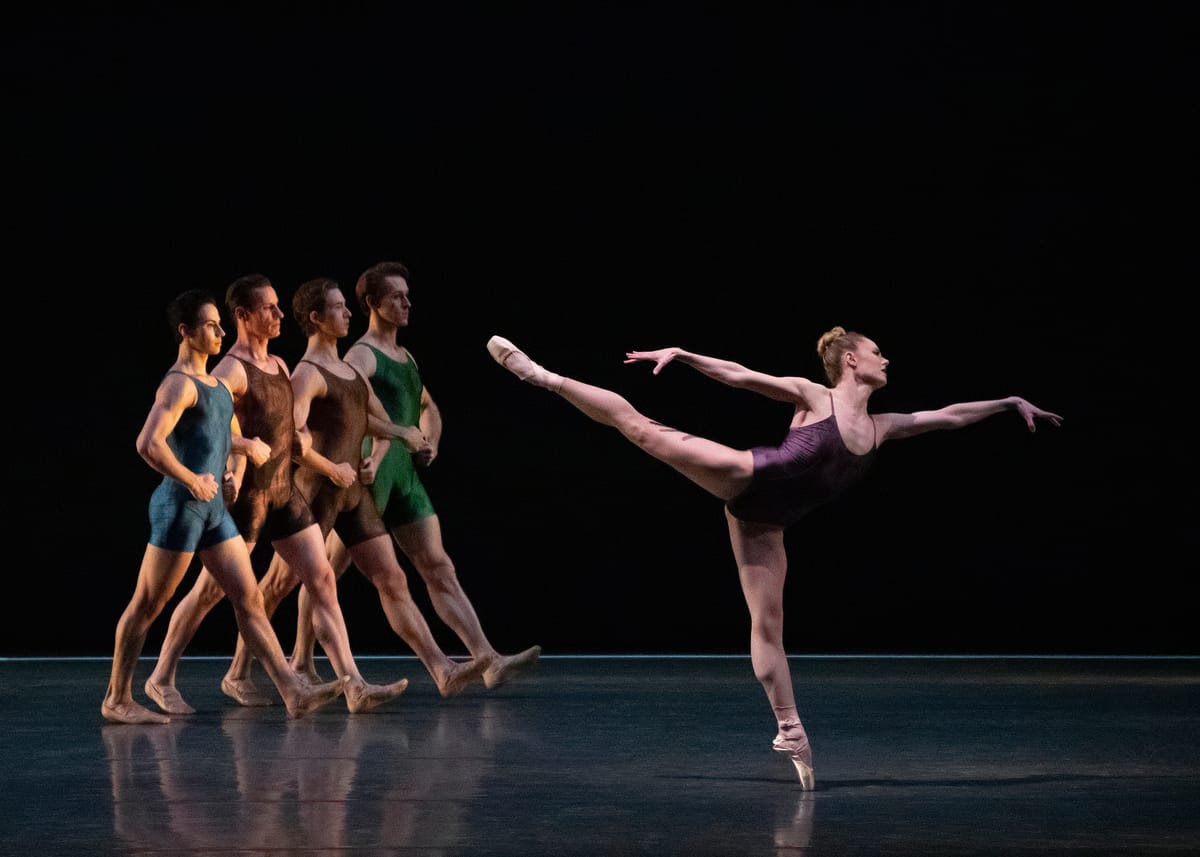
“Polyphonia,” “Bright,” “Opus 19/The Dreamer,” “Voices”
New York City Ballet
David H. Koch Theater
New York, New York
January 30, 2020
The premiere of Alexei Ratmansky’s “Voices” on Thursday aptly illustrated the Balanchine aphorism (“There are no new steps, only new combinations”) that New York City Ballet employs as the motto of its annual winter New Combinations evening. Highly classical in it steps but unexpected in its mise-en-scène and conception, “Voices” proved a refreshing bit of nonsensical dance, but at the same time a provocative exploration of just what sense and nonsense are.
When the curtain goes up, the stage design features a series of spotlights in two lines on the floor on both sides of the stage, retreating towards the rear of the theater. The action is thus flooded with light from the sides as well as above. Meanwhile a soundwave – like that displayed on old stereo cassette tape decks – is projected on a drop in the rear of the action as a visual counterpoint to Peter Ablinger’s score based on human voices doubled by piano. When the dancers enter they are dressed in glossy rayon bathing suits in primary colors: maroon, green, gold, royal blue (Keso Dekker designed both scenery and costumes), with the impression being slightly garish but oddly in tune with Ratmansky’s conception here. Imagine a Moscow version of a Merce Cunningham design; and indeed, with the soundscape and adventitious ambiguities of how the steps fit the music here (about which more below), Cunningham is the ghost haunting this ballet.
The most overt Cunningham-John Cage touch, of course, is how Ablinger’s soundscape employs voices either droning unintelligibly or half understood in the background. But in Ablinger’s conception the piano simultaneously mimics the rhythms of the speech and the tonality of the notes. Glenn Gould comes to mind. The voices of Bonnie Barnett, Fjendine Ståtien, Farough Farrokhzad, Setsuko Hara and Nina Simone accompany separate entrances for individual dancers. When the speech is in English, as it is for Bonnie Barnett’s opening sequence, you actually understand a bit of what you’re hearing: in her case the patter of a late night Los Angeles radio show host.
But understanding is not the point and not even possible where the sound track continues into garbled foreign language speech after Barnett. The dancers appear to dance to the rhythmic structure and half known words and the point seems to be the proto-Cunningham theme of how the movement either does, or does not, relate to half glimpsed meanings.
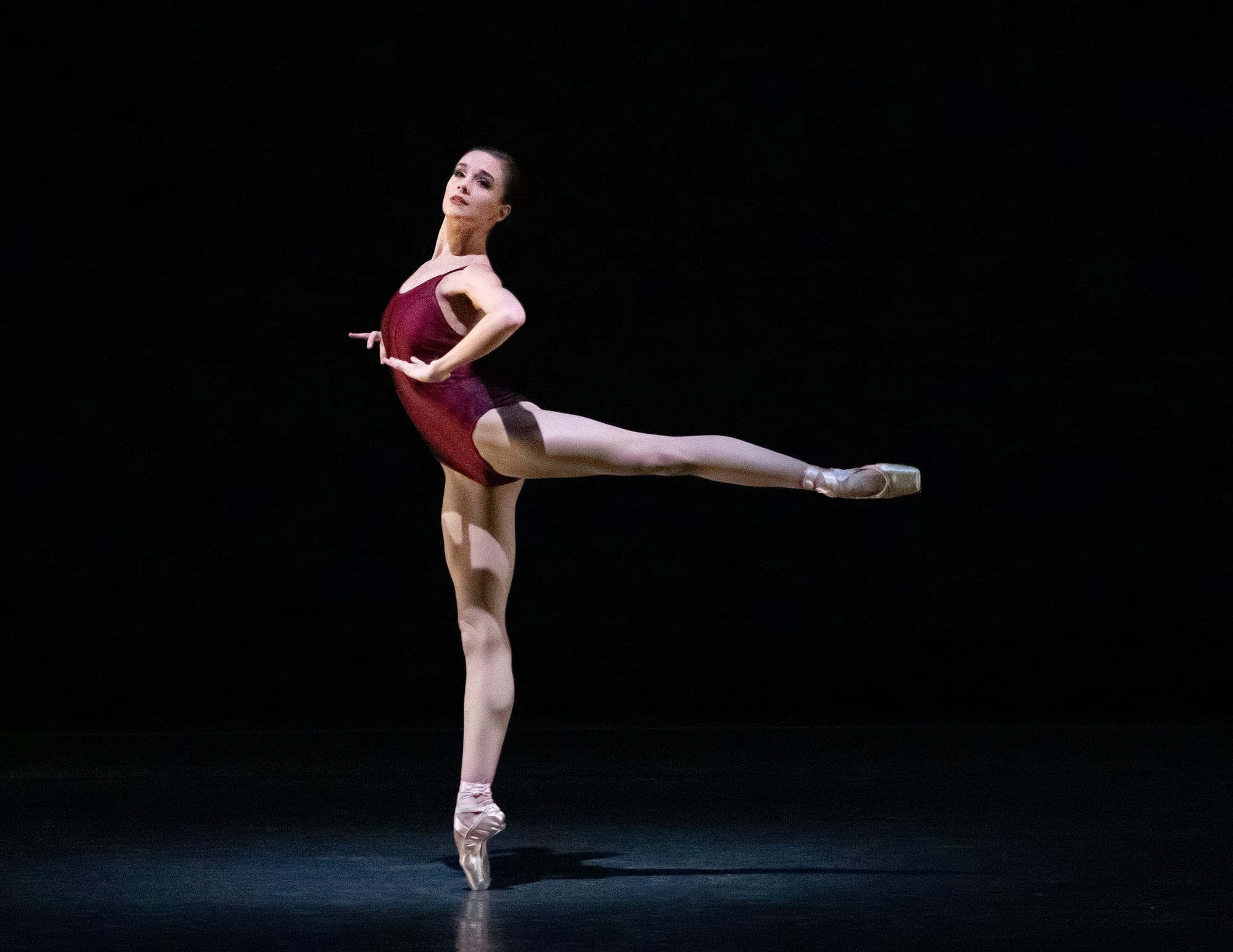
Each vocal section, realized on stage as dance, then consists of a separate solo for a ballerina, occasionally supported at its conclusion by a group of men. In addition, at the conclusion of each extended female solo, a single man enters and sweeps the stage in a virtuosic coda.
The steps are entirely classical in Ratmansky’s usual tensile and character dance-inflected Bolshoi Ballet style, although Sara Mearns is given one literal quotation from Cunningham. Thus imagine “The Bolshoi does Merce” but in ballet steps, with Megan Fairchild following Mearns, who is followed in turn by Unity Phelan, Georgina Pazcoguin and Lauren Lovette. The supporting men are Andrew Veyette, Roman Mejia, Ask la Cour, Joseph Gordon and Adrian Danchig-Waring.
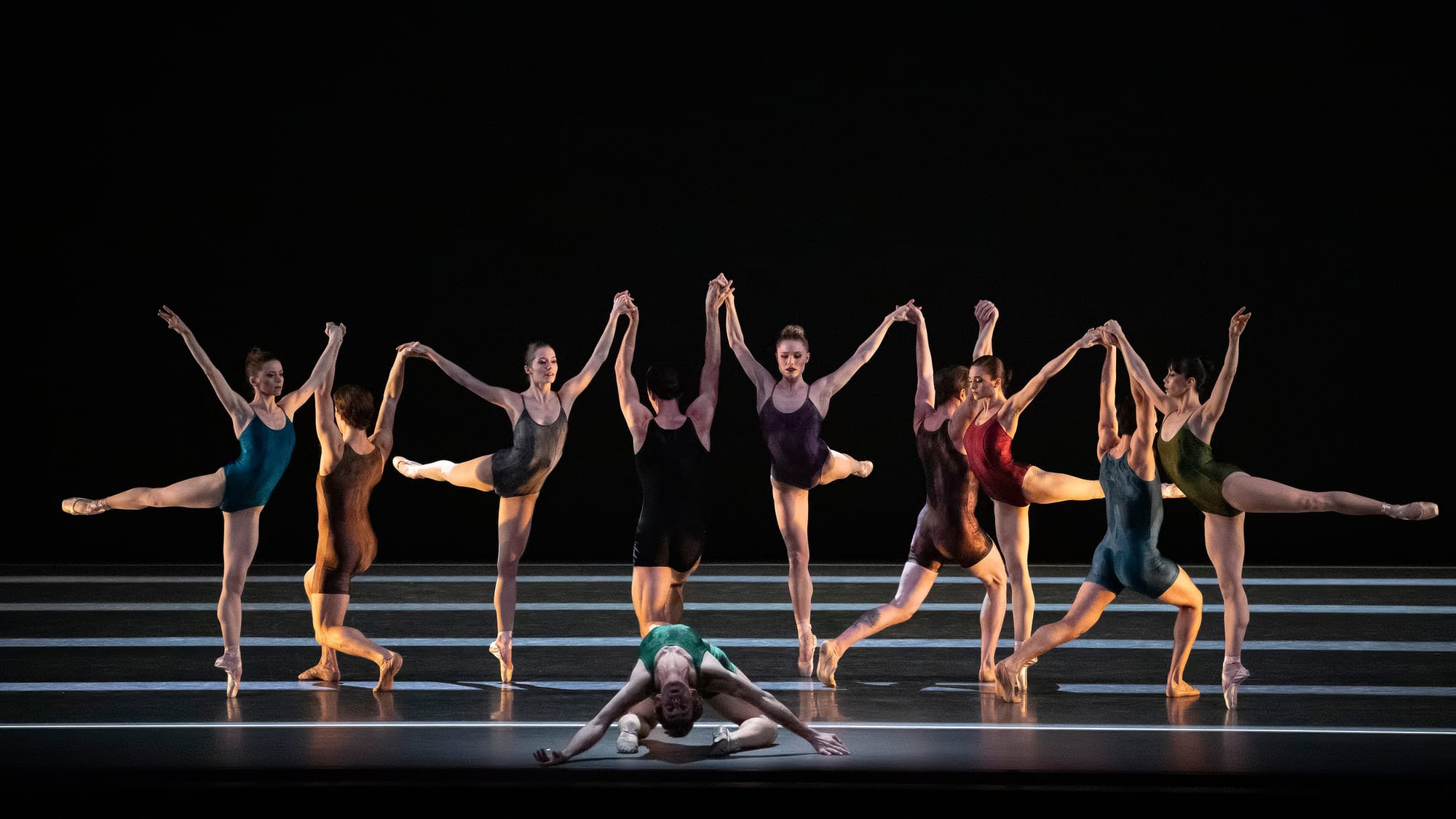
Finally the piece ends with a group entrance of a formation familiar in Ratmansky and that particularly recalled the concluding section of his “Pictures at an Exhibition.” But for this group entrance Ablinger’s voice-over returned to English and the voice was the abstract artist Agnes Martin (she of the pastel, cool, geometric grids, the neo-classicist among abstract artists par excellence) speaking now more intelligibly about abstraction and artistic meaning, roughly in terms such as, "I felt a painting coming on all day and just wanted to paint it . . . They asked me what it meant but I just painted a feeling," etc. (My paraphrase.)
Crucially, in this final vocal section the piano no longer doubles the vocal rhythms but instead (again like Mussorgsky’s “Pictures”) becomes major chords, now framing the speech and dividing it up into strophes or stanzas, so that a chord strikes, the speaker intones a sentence, another chord strikes, and then there’s another sentence. The relationship of voice to piano has therefore switched; the meaning of the words is now part of the experience and, with the words now emphasized as sentences, the viewer’s entire relationship to the text has been stood on its head.
Where during the women’s solos to nonsense the audience was free to treat dance as blessedly meaningless dance, partaking of a brilliant confection, the atmosphere becomes suddenly heavy and the music oppressive with chords. Meaning has returned, bringing the intellect along with it, a prior lightness of experience is gone, and the entire staging has been a sort of Zen Koan in reverse. Instead of starting with intellectual sense and struggling to get free of it by figuring out nonsense – the usual Zen procedure (“where were you before your parents were born,” etc.) – you’ve started with dance nonsense only to feel the weight of intellectual sense once it reenters.
“Stop making Sense,” David Byrne famously titled an album. The material also relates strongly to the contemporary art tradition – originally pioneered by René Ricard (who got little credit for it) - that uses words as figures in painting, so that the task of the viewer is to achieve being able both to see and understand the words as mere figuration dissociated from “written” meaning, a tradition associated these days with artists such as Jenny Holzer and Edward Ruscha. Jasper Johns’ flag paintings and Andy Wharhol’s soup cans also come to mind (where the task is to see the familiar symbols or advertising as mere figuration or color patterns).
Based on only a single viewing, many questions of course remain about this piece, particularly the degree to which the dramatic content of the individual dances may reflect the content of the speeches that are unintelligible to the audience because they are in different languages or obscured by amplification and distortion. Has Ratmansky – with access to the verbal textual meanings – hidden coded action within the ballet? There’s a hint of this when Pazcoguin leaves the stage during a solo where Nina Simone, speaking in English, seems to talk about “getting out of America because of the way blacks are treated.” More information may become clear about a submerged text as time goes by.
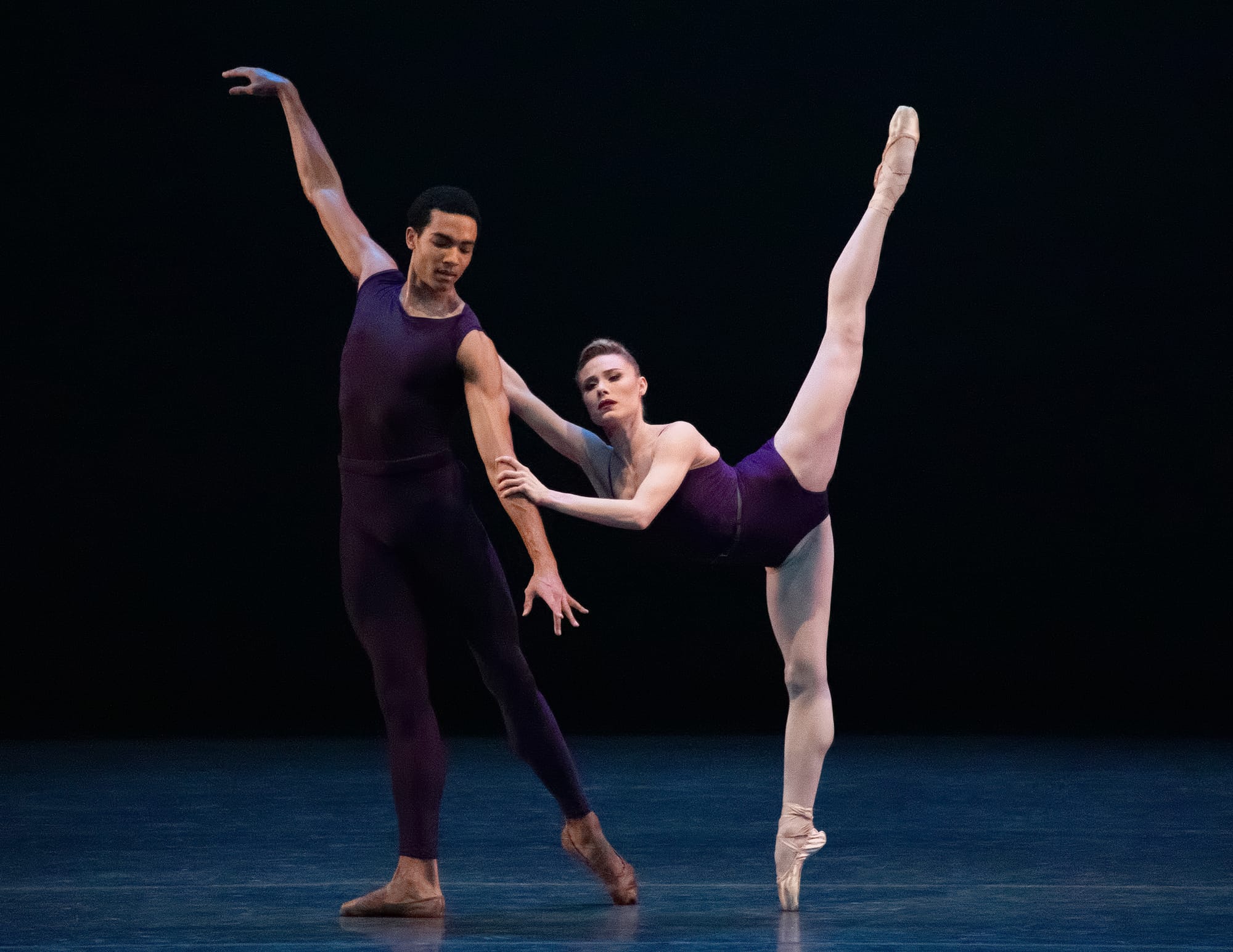
In performance, the stellar NYCB cast dug into the material with the particularly intense focus of performers in material made on them. But that same brilliant edge was also present earlier when the program started with the revival of Wheeldon’s “Polyphonia” and reprises of Robbins’ “Opus 19/ The Dreamer” and Justin Peck’s “Bright.”
“Polyphonia” got a stunning performance. With the exception of Sara Mearns in the role originally made on Alexandra Ansanelli, the cast for the ballet was entirely new and featured Lovette and Veyette in Wendy Whelan and Jock Soto’s original roles along with Alston Macgill and Roman Mejia, and Megan Fairchild and Jovani Furlan as the other two couples and Silas Farley partnering Mearns. The way the dancers fit each other as a group made this one of the best performances of the ballet since its inception. Where the original cast - featuring not only Whelan and Soto but also Jennie Somogyi and Craig Hall – included a number of very individual personalities, sizes and types, the group here was more homogenous. This “Polyphonia” therefore stressed the ensemble and put the focus on the neo-classicism of the steps. Nearly 20 years old now, “Polyphonia” is a lovely ensemble, all-soloist ballet and has entered the classical canon. Making striking debuts, the 22-year-old Macgill and equally young Mejia, both still in the corps de ballet, fitted into the group of principal dancers without missing a beat.
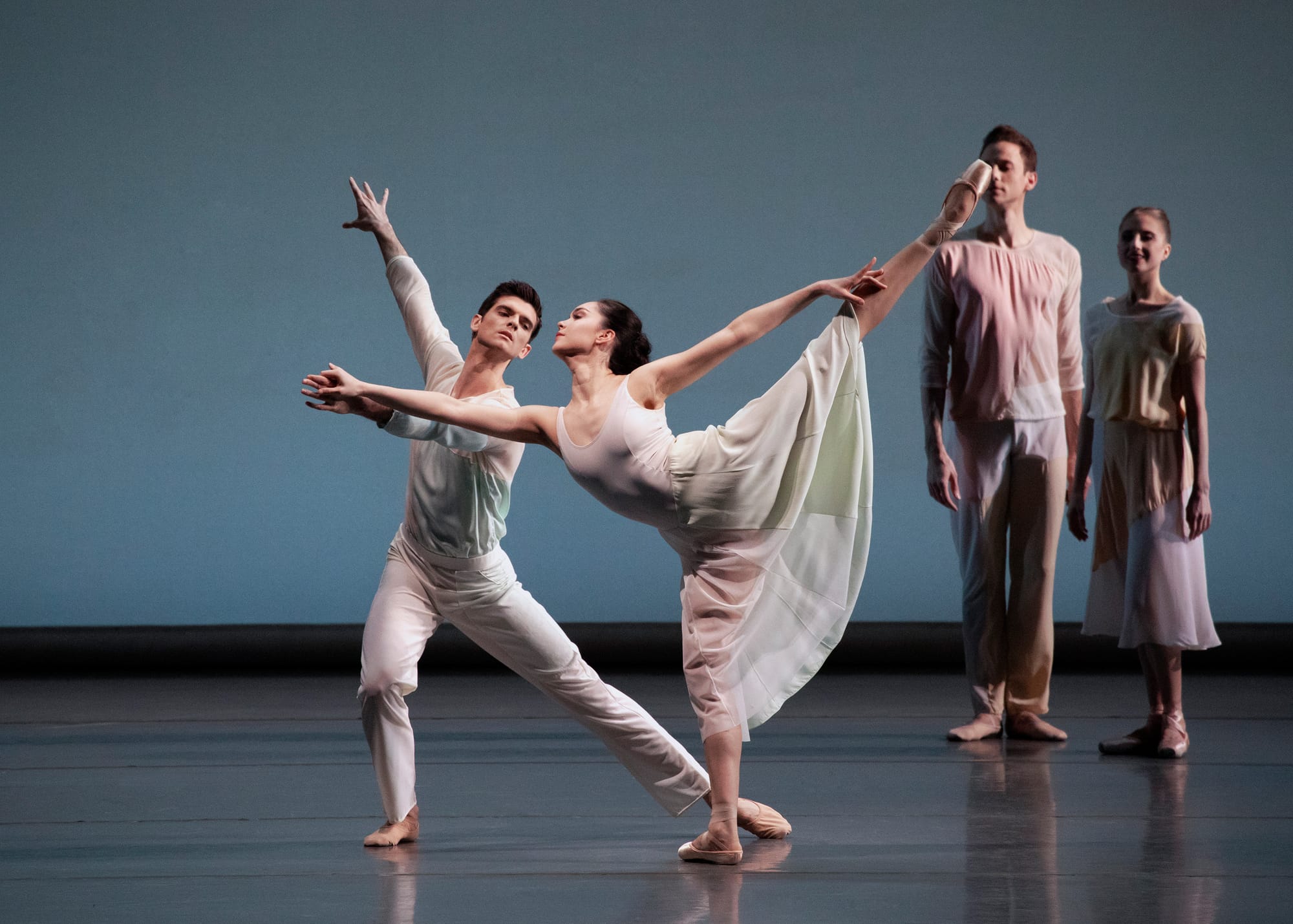
Gonzalo Garcia led “Opus 19” with Unity Phelan making an important debut as his partner. She danced with fully mature strength, finishing all of the steps and combinations perfectly, but could have been more expressive. The role profits from some acting.
Justin Peck’s “Bright” – a six minute piece from last year’s New Combinations evening – featured the company’s latest young phenom, Mira Nadon, doing repeated arabesques that displayed her beautiful person, lines and fluid extension. But how many times in succession can the audience watch her do the same step without getting bored? The program would have been better without this meaningless – in the worst sense of the word – composition.
copyright © 2020 by Michael Popkin



